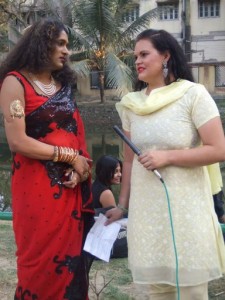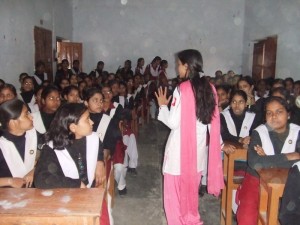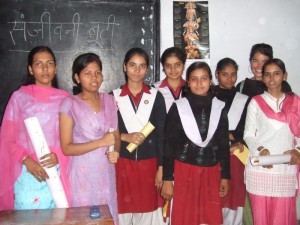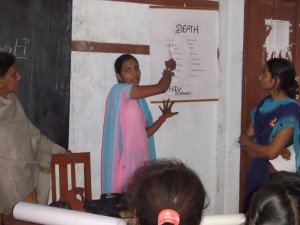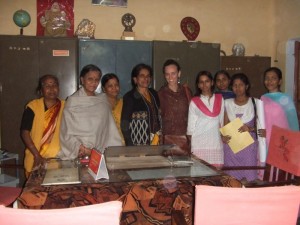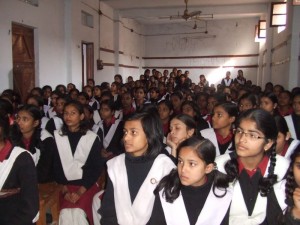I visited my village after being away for ten years and I saw a lot of changes that made me sad. I used to think that Indian villages were still safe but the reality was completely different. I still remember that there was a pond right in front of my village house but this time half of it was covered with clay and other waste. India’s buying power have increased a lot within past fifteen years, and now people like to buy different things but they do not know how to get rid of the waste that comes out of the stuffs we buy.
I don’t blame people for this problem; government has no plan for waste management. All these things are new to India and we do not know about it, so we need to be educated about it. It has been part of Indian culture to throw rubbish outside of the house, but the good thing about past rubbish was that it was made of natural resources. Cows and other animals have also been wandering here and there in India since India has been in existence and these animals used to finish all that trash because our trash was natural, but now our trash is made of plastic and other strange chemicals and definitely they can not finish it anymore.
People living in the villages have also started buying packed products and usually they throw all the waste in the open spaces or ponds or places like that. Same thing happened with the pond in front of my village house. People throw all of their waste in this pond and now half of the pond is almost gone. People do not know how it will affect their lives in the future. I talked about it with the people in the village and nobody took interest in it. They think that it is good to cover the whole pond because there is always water in it and it spawns mosquitoes.
Of course covering the ponds is not a good solution to get rid of the mosquitoes because they could clean it and keep it clean and then the pond will not spawn mosquitoes. I knew that there was a well near that pond and I was very interested in that well because once about fifteen years ago my brother had fallen in it, so I wanted to see it. However when I reached near that spot, I found that there was nothing like a well here, just nothing. There was plain ground. I was wondering how that well disappeared. I asked my cousin about it and he told me that they had covered that well completely.
It was shocking for me. It did not make any sense to me. I just did not understand why they made that decision. I have seen people facing water shortages and I know how important a well could be to recharge ground water, but the sad thing was that people in my village never thought about it because they did not know about it. I also talked about it with people and they told me that this well was useless for them. The first reason was that my brother had fallen in it so they were scared that somebody else could fall in it again and the second reason was that the water was not drinkable anymore.
They could have used a screen so that rain water could pass through it but they decided to cover it completely. I saw each and everyone in the village using plastic somehow in their daily lives and they throw all these plastics somewhere out of the house. They just do not know anything about plastics. It is still not too late for the government to control all these bad things and they can do it by introducing environmental studies and making them compulsory for all students.
Villages are also getting huge problems now. The quality of education has decreased a lot, and actually I would say there is not education at all in the villages. Students just go to schools, pass time by massaging the feet of their teachers and finally get a degree, its true. Finally they go to cities to get jobs and find that they can not have a job because they never learnt anything. They find themselves far away from the city life. They can not socialize, can not make friends…
And when they see girls wearing short skirts it increases their sexual frustration. They also want to have sex but in fact they can not have because they can not get integrated. So finally they reach brothels and since they are not aware of the use of condoms, they contract HIV and all other kinds of dangerous sexually transmitted diseases. When they come back to their village, they pass it to someone else. Young people living in villages like chewing gutka a lot which has become the biggest cause of mouth cancer in India. I noticed that most of the young people were chewing gutka.
People say that a third world war will happen for water, and after seeing things going on in India nowadays, it seems to me that India will be the first country to start this war because we will have largest number of people in the whole world. We have killed all of our rivers, have cut down 80% of the jungles and now we have started killing our ground water. The pesticides that have been banned in Europe and America can be easily found in Indian markets and farmers use them for agricultural purposes because they do not know how harmful those pesticides are.
The Indian government seems to have no control over India, over Indian people or over anything and these things will explode in the future like a nuclear bomb.The whole world is doing research to repair the damage we have done to this planet but India seems to be the only country of the world where we have been destroying the planet for years and it doesn’t seem that it will stop soon. If the environment has anything to do in terms of setting quality of living, then Indians will have the worst quality of living in the whole world within next fifteen-twenty years. I don’t know if the Indian government will ever wake up, but Indians will wake-up someday for sure but by that time it will be too late.

